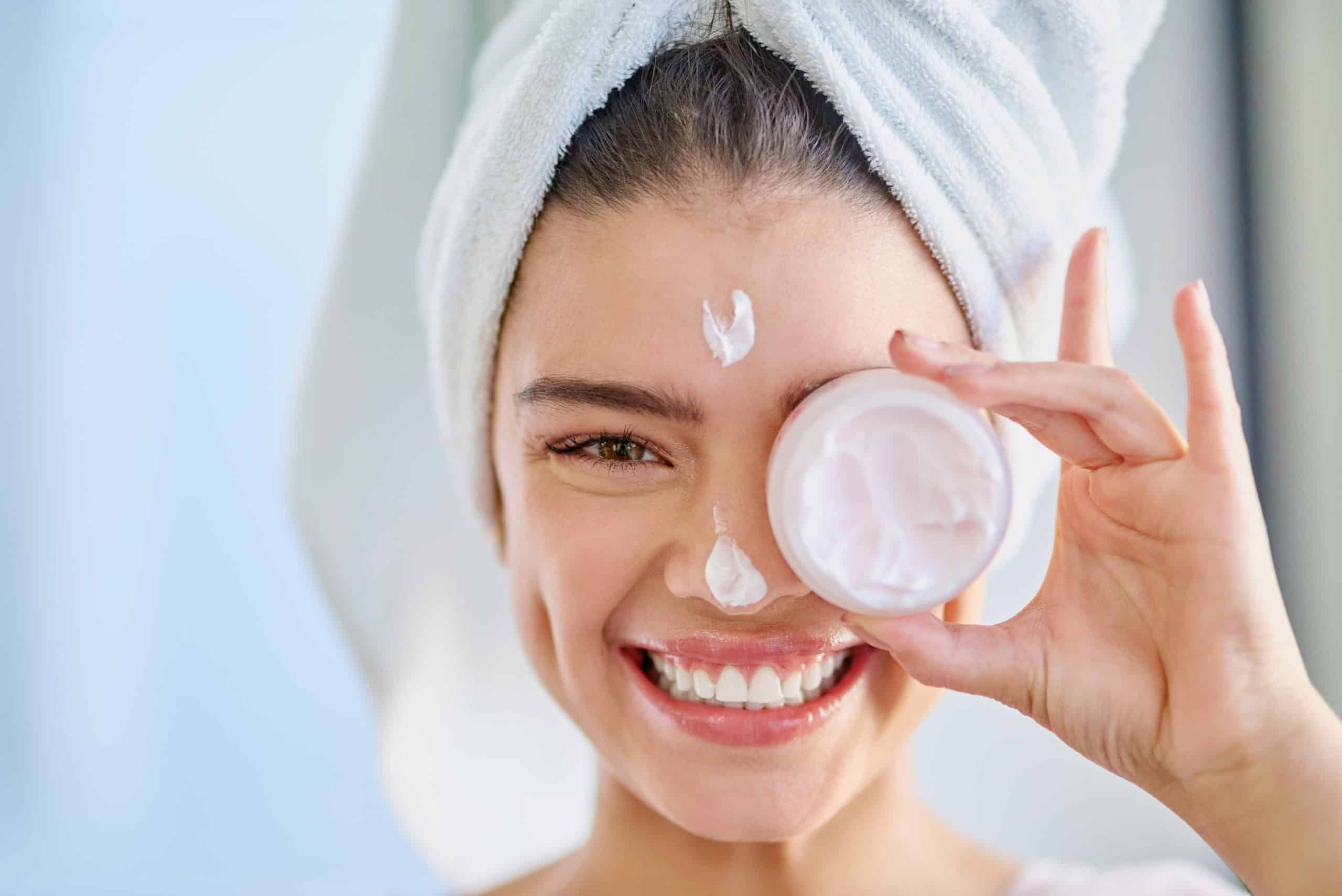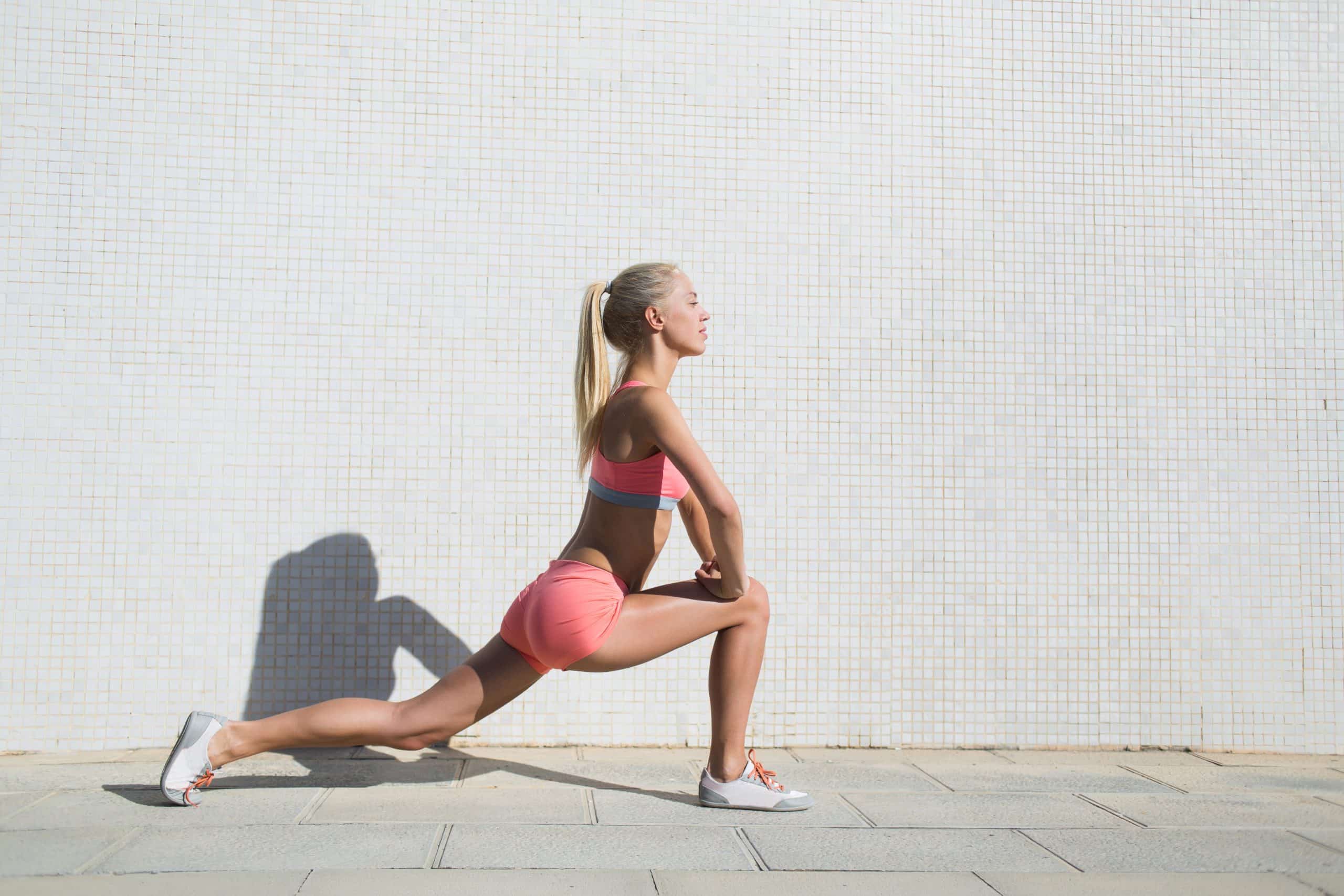The hydrating vs. moisturizing debate is pretty old. Unsurprisingly, you may wonder which would work better for your skin. Store lotions, emollients, and face scrubs claim to moisturize, hydrate, or both, but which one do you need to use on your skin?
Hydrating vs. moisturizing are interchangeable terms to some, but they are entirely different. They work toward the same goal but in unique ways. Once you understand how each one works, you can determine whether to moisturize, hydrate, or do both.
Which Is Better, Hydrating or Moisturizing?
The hydrating vs. moisturizing difference shows how both achieve excellent results in different ways, which you’ll use according to your skin’s needs (4).
- Hydrating products attract water to your skin’s cells through the air or skincare products, allowing the cells to expand and look softer and smoother.
- Moisturizing products lock the moisture into your skin with a protective layer and typically feel greasier to prevent dissolving or evaporating water.
Hydrating vs. Moisturizing Difference
The hydrating vs. moisturizing differences extend beyond what the products do. Understand the key components to know how to use them.
If you wish to cinch your waist, tone up your bat wings, blast away the muffin top – our fitness app was created to cater to all your needs! BetterMe won’t give excess weight a chance!
Hydrating vs. Moisturizing Ingredient Types
Dermatologists Tiffany Libby and Caren Campbell say there are three main components in hydrating and moisturizing products (8):
- Emollients are moisturizers that form a protective oil-based layer over your skin to seal the moisture under the skin. These ingredients smoothen and soften skin.
- Humectants are moisturizing and hydrating agents that absorb water into your skin’s epidermis cells, like a sponge. Humectants make your skin softer, subtler, and more radiant.
- Occlusives are moisture-locking agents that prevent water from evaporating. They stop or slow down transepidermal water loss to seal moisture into your skin’s cells. These ingredients make your skin look more radiant.
Hydrating vs. Moisturizing Skin Ingredients
Many skincare products have multiple components, including emollients, occlusives, and humectants. Meanwhile, some products use humectants and occlusives as emollients with crossover components. Let’s help you identify different ingredients (5, 4).
- Emollients: Ceramides, fatty acids, coconut oil, palm oil, and lipids.
- Humectants: Hyaluronic acid, glycerin, and propylene glycol.
- Occlusives: Petrolatum, silicon, lanolin, mineral oil, vegetable oils, and animal fats.
On a side note, hyaluronic acid can hold up to 1,000 times its weight in moisture. The Cleveland Clinic says hyaluronic acid can make wrinkles and fine lines appear smoother, a natural component typically found in the eyes and skin (9).
What’s better than using the skin’s natural hydrator as a replacement when your skin feels dehydrated? Hyaluronic acid may also be read as hyaluronan and hyaluronate on skincare products. Also, various ingredients fall into two categories. For example, lanolin creates a protective barrier as an occlusive while hydrating cells as a humectant (5).
Hydrating vs. Moisturizing – Natural Ingredients
Hydration and moisturization come from many natural ingredients in skin care products or face masks. Let’s discover the primary elements to look for when needing either treatment for your skin (6, 1, 12, 11). Remember that some ingredients will hydrate and moisturize.
- Natural Moisturizers: Sunflower seed oil, coconut oil, almond oil, tea tree oil, olive oil, avocado oil, rosehip oil, oatmeal, milk, honey, petroleum jelly, aloe vera, glycerine, beeswax, and cocoa butter.
- Natural Hydrators: Honey, jojoba oil, clay masks, aloe vera, almond oil, egg whites, soy milk, fuller’s earth, and gram flour.
Hydrating vs. Moisturizing Conditioner
The hydrating vs. moisturizing conditioner debate reveals similar answers because of the word’s meanings. Figaro London shares the differences between moisturizing and hydrating your hair and scalp (10):
- Hair conditioners that hydrate include ingredients like water, aloe vera, and floral water. They restore the moisture lost with hair dryers and straighteners.
- Hair conditioners that moisturize use jojoba oil, shea butter oil, and other oil-based ingredients to lock the moisture into your hair.
Read more: 13 Exercises to Tighten Neck Skin and Reduce Sagging
Do I Need to Hydrate or Moisturize My Skin?
The hydrating vs. moisturizing debate has a simple answer: it depends on your skin type and condition. Sometimes, it depends on the season. Let’s discover what skin types could use which skincare routine and in which cases you can use both.
Hydrating vs. Moisturizing for Dry Skin
The Cleveland Clinic suggests adding a moisture-locking lotion to dry skin (4). Dry, flaky, or peeling skin indicates an inability for your skin to hold moisture in the cells, and it doesn’t have a protective layer of natural oil.
Sometimes, winter, eczema, or other skin conditions can cause dry skin for many, breaking the skin’s protective barrier. Moisturizers with occlusives and humectants can help you restore the radiant shine you deserve.
Hydrating vs. Moisturizing for Oily Skin
The American Academy of Dermatology Association (AADA) blames oily skin on genetics, stress, hormones, and humidity (7). Humidity is the problem because skin loses too much moisture to transepidermal evaporation. Oily skin shows you’ve lost the protective barrier.
In that case, you need a moisturizing lotion or face mask to restore the balance of natural oils on your skin. You must also wash your face with gentle, alcohol-free cleansers before applying a daily moisturizer with petrolatum or other occlusives to restore your radiance.
Hydrating Moisturizer for Different Skin Types
The AADA recommends buying products from stores suited to your skin type (2). For example, buy a moisturizing lotion, which likely has humectants, if you have dry skin. The bottles show you the recommended skin types. Don’t buy dry skin lotion for oily skin.
Also, be sure to use hydrating moisturizers if you have sensitive skin. Use products that say “hypoallergenic” or “for sensitive skin.” Hypoallergenic skin products also work well for aging skin as they contain more hydration ingredients to smoothen wrinkles and fine lines.
Answering the hydrating vs. moisturizing the face question has the same answer. Use products recommended for your specific skin type, as they contain the right blend of ingredients. Also, remember to moisturize skin in winter to prevent dry, flaky skin.
How Do You Know if Your Skin Is Well-Hydrated?
WebMD suggests using the pinch test to see whether your skin needs more hydration (13). Dehydrated skin loses its elasticity and may lead to bags under your eyes or loose skin. Fine lines and wrinkles become more noticeable, and you may itch or experience dull skin tones. Use these guidelines to do the pinch test:
- Pinch some skin between your thumb and forefinger
- The skin will return to its original state in seconds if you’re well-hydrated
- Otherwise, the skin will take longer to return if you’re dehydrated
WebMD suggests drinking water to hydrate your skin properly (13). Moisture from the inside is the best way to rehydrate the skin. The Mayo Clinic recommends 3.7 liters for men and 2.7 liters of water daily for women (16). Drink up to see softer, smoother skin.
What Is the Moisturizing Rule?
The 3-second moisturizing rule guides timing during your skincare routines. The rule states that you should apply moisturizer three seconds after washing your face. Why would your skincare routine improve if you followed the 3-second moisturizer rule?
BetterMe is your fast-track ticket to a long-lasting weight loss! Tailor your fitness journey and maximize your results with just a couple of swipes!
FAQs
Should My Face Be Damp Before Moisturizer?
When wet, skin is more absorbent to moisturizers and other skincare products. The National Library of Medicine suggests wetting your skin before applying topical products for the best absorption (3). Using products to wet skin also helps with eczema.
In What Order Should I Moisturize My Skin?
Is a hydrator or moisturizer first? Hydrators put moisture into your skin’s cells, while moisturizers seal them (4). Always hydrate your skin before applying moisturizer, or you won’t absorb the water your skin needs from a hydrating product.
What Are the 7 Steps of Skincare?
The 7-step hydrating vs. moisturizing sequence will keep your skin subtle, soft, glowing, and super radiant. Let’s discover what else you do in your step-by-step routine. Use this 7-step skincare routine to hydrate, moisturize, and more (14):
- Wash your face with a gentle cleanser
- Prep your skin with a toner to help the hydrator absorb better
- Ensure your skin stays slightly damp
- Hydrate your skin with your favorite serum
- Add extra hydrating serum around wrinkles and fine lines
- Apply your moisturizer
- Protect your skin with sunscreen if your lotion doesn’t include it
Do You Moisturize Before Bed?
Yes, but AADA also recommends washing your face and removing all makeup before bed (2). After doing this, Martha Stewart suggests hydrating and moisturizing your face before bed to help the products do their magic while you sleep (15).
For More Skincare Tips:
The Bottom Line
The hydrating vs. moisturizing debate answer finally reveals how to choose the right option for your skin’s current condition or type. Moisturize dry skin and hydrate dehydrated skin. Furthermore, use both to keep your skin radiant and smooth, especially during winter.
DISCLAIMER:
This article is intended for general informational purposes only and does not address individual circumstances. It is not a substitute for professional advice or help and should not be relied on to make decisions of any kind. Any action you take upon the information presented in this article is strictly at your own risk and responsibility!
SOURCES:
- 9 Natural Moisturizers for Skin (2022, emedihealth.com)
- 10 Skincare Secrets for Healthier-Looking Skin (n.d., aad.org)
- Eczema: Steroids and Other Topical Medications (2017, ncbi.nlm.nih.gov)
- Emollients: Creams, Soaps, Moisturizers, Ointments, Benefits (2022, my.clevelandclinic.org)
- Exploring Ingredients – Occlusives & Emollients (2021, canr.msu.edu)
- Home Remedies for Dry Skin (2023, medicalnewstoday.com)
- How to Control Oily Skin (n.d., aad.org)
- Humectants vs. Emollients vs. Occlusives, Explained By Dermatologists (2022, wellandgood.com)
- Hyaluronic Acid: What It Is, Benefits, How to Use, and Side Effects (2022, my.clevelandclinic.org)
- Hydrating vs. Moisturizing Your Hair | Figaro London (n.d., figarolondon.uk)
- Natural Home Remedies for Oily Skin (2023, pharmeasy.in)
- Oily Skin: Natural Remedies to Make at Home (2021, medicalnewstoday.com)
- Signs of Poor Skin Hydration (2023, webmd.com)
- Skin Care Routine – 7 Steps to Treat Your Skin | Dr. GL (2022, drgl.com)
- This Is the Best Time of the Day to Moisturize Your Skin (2019, marthastewart.com)
- Water: How Much Should You Drink Every Day? (2021, mayoclinic.org)












